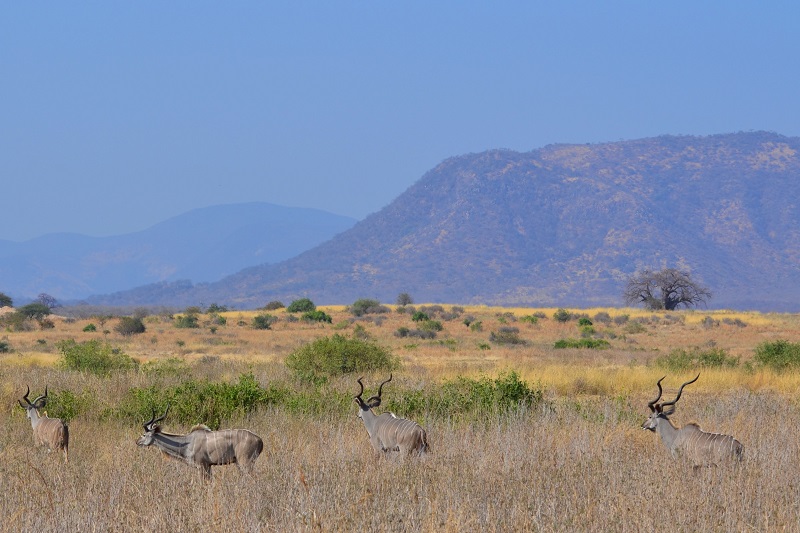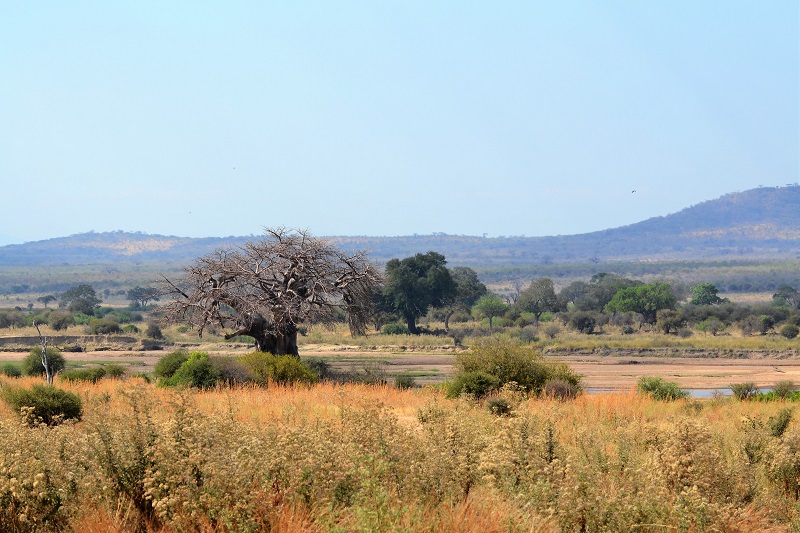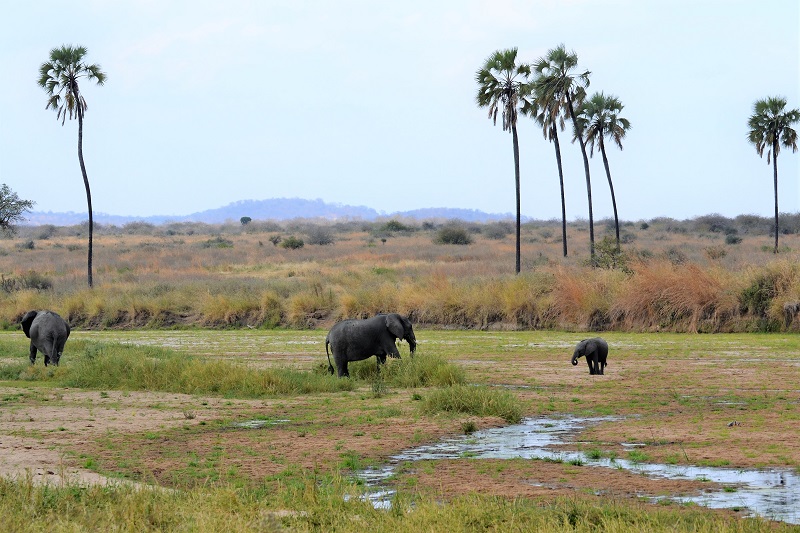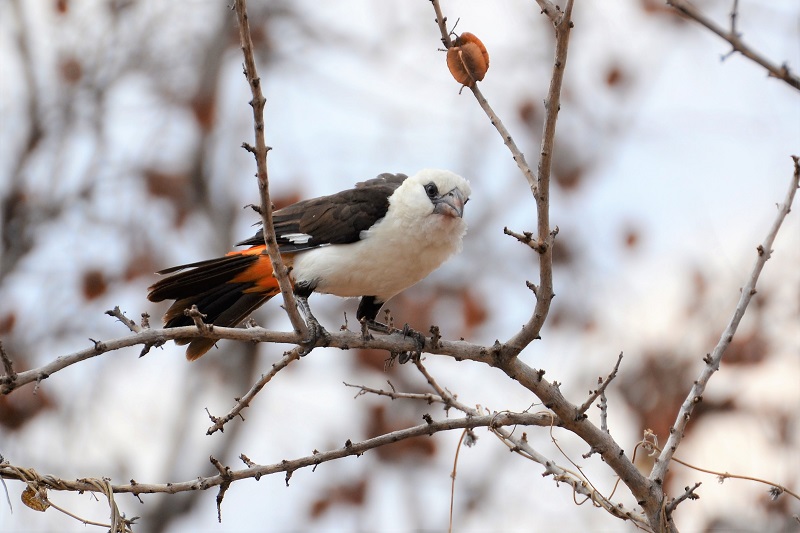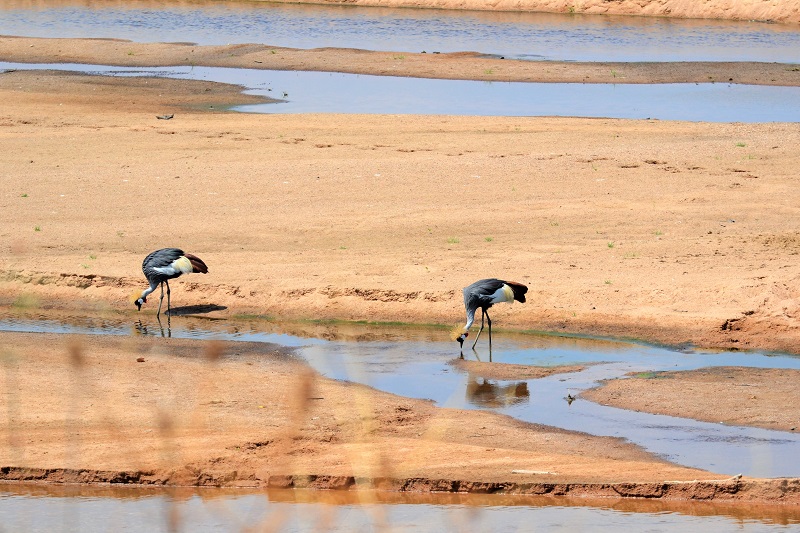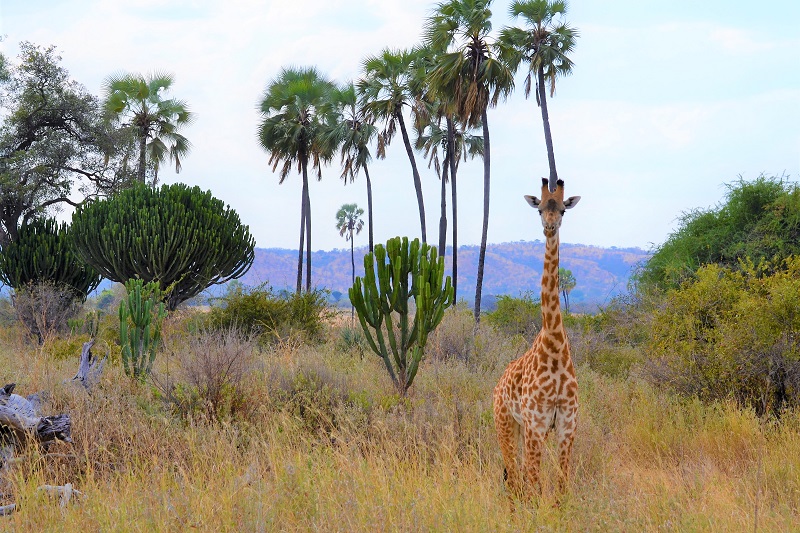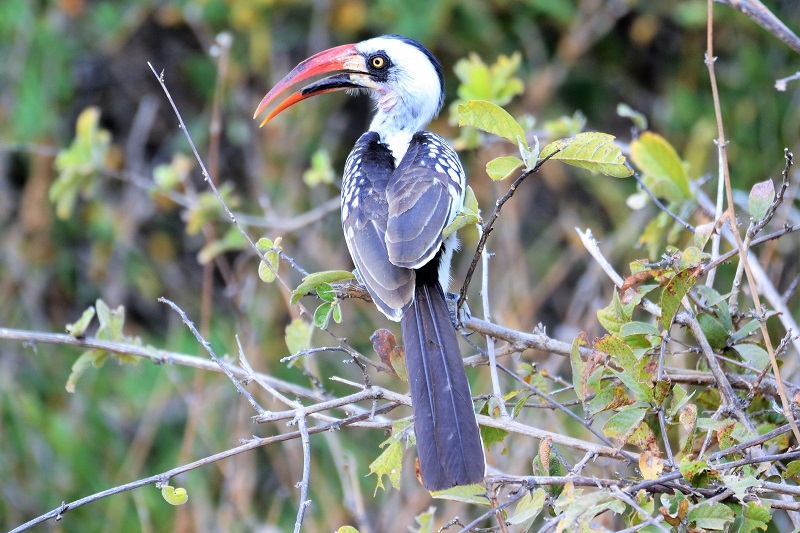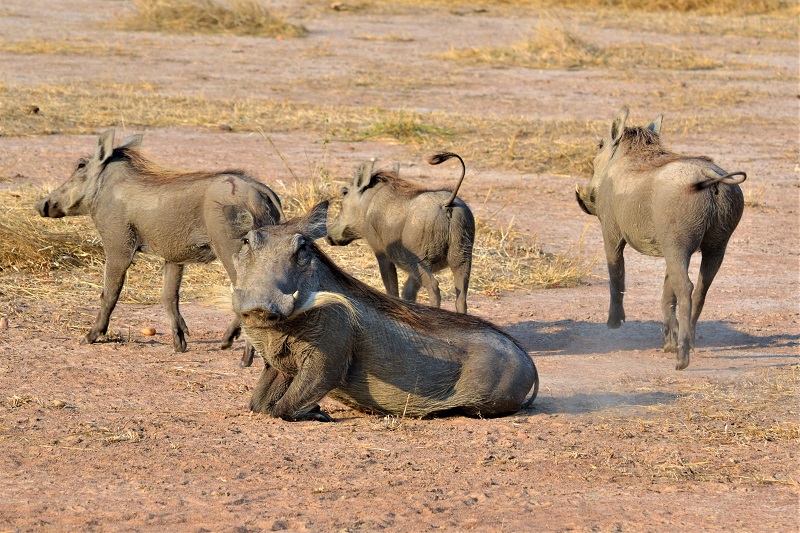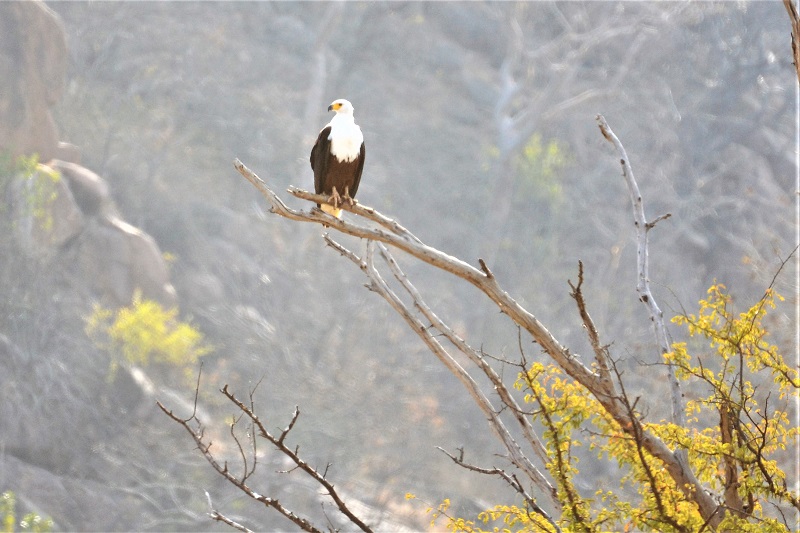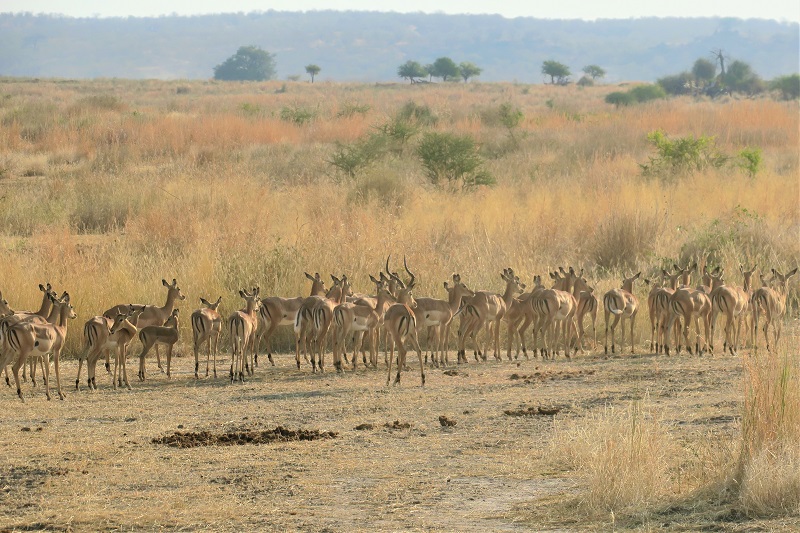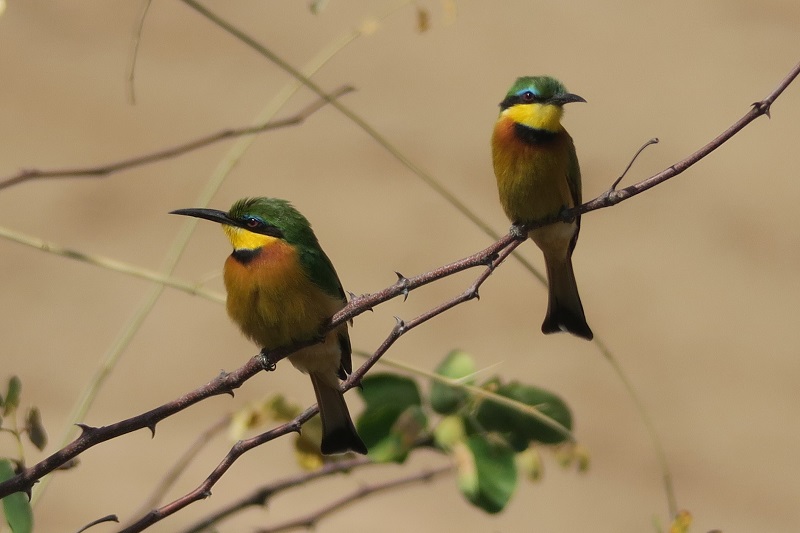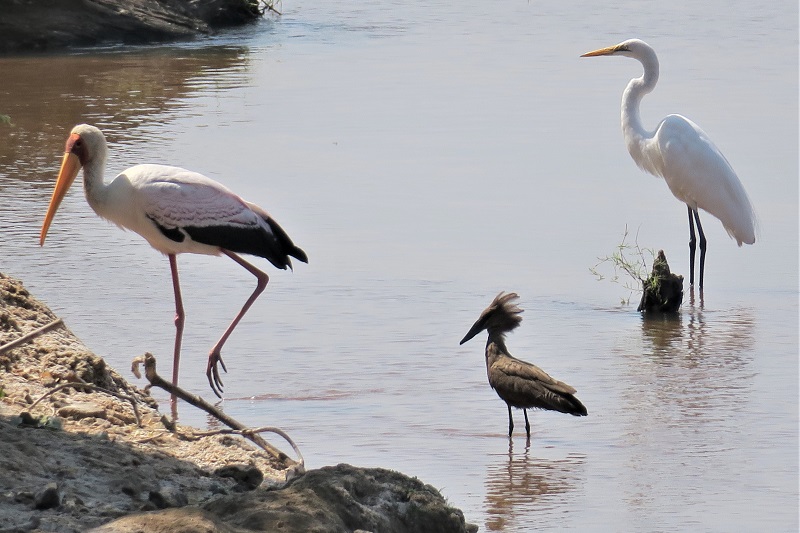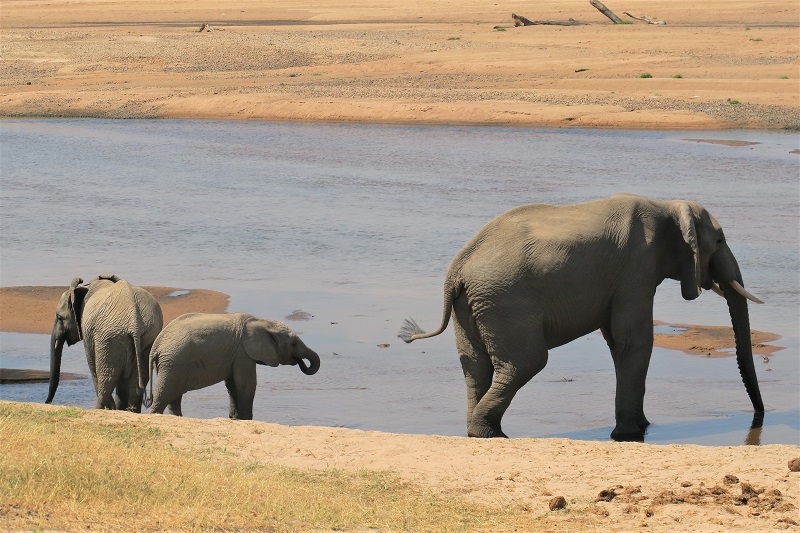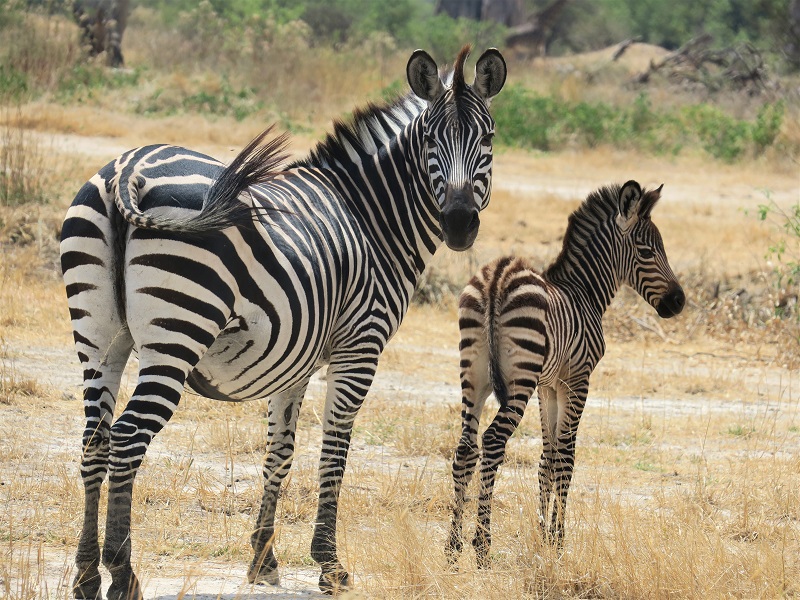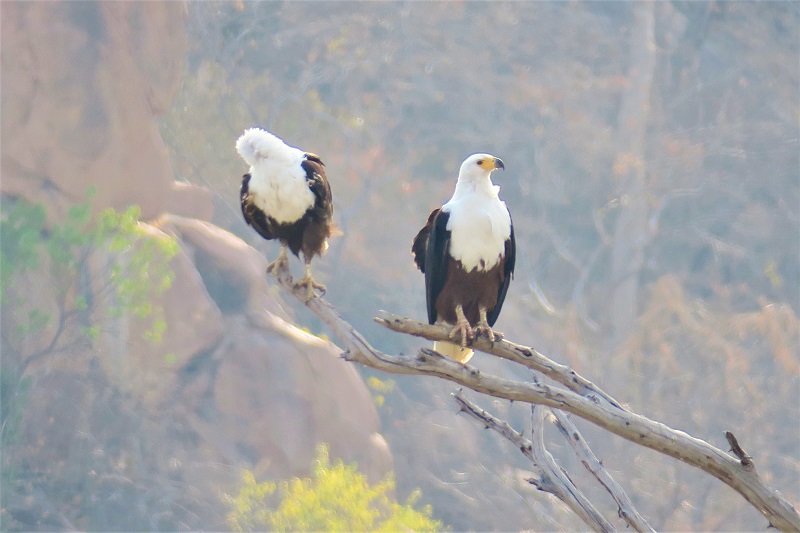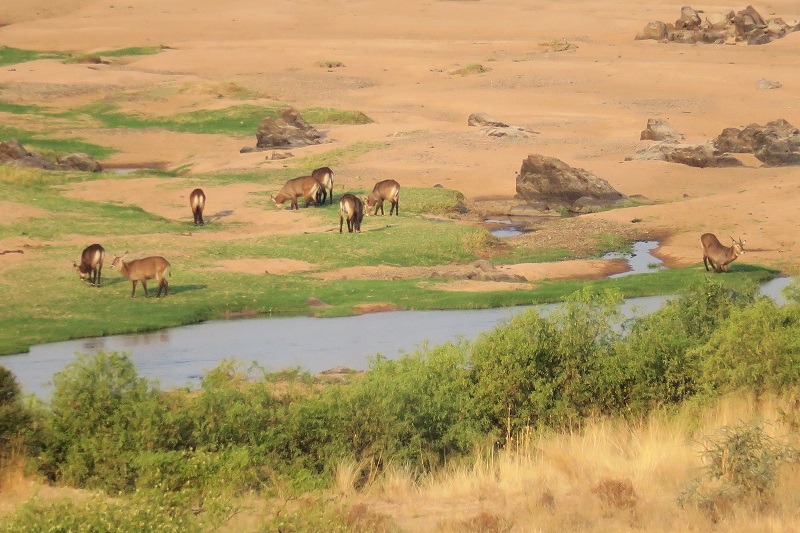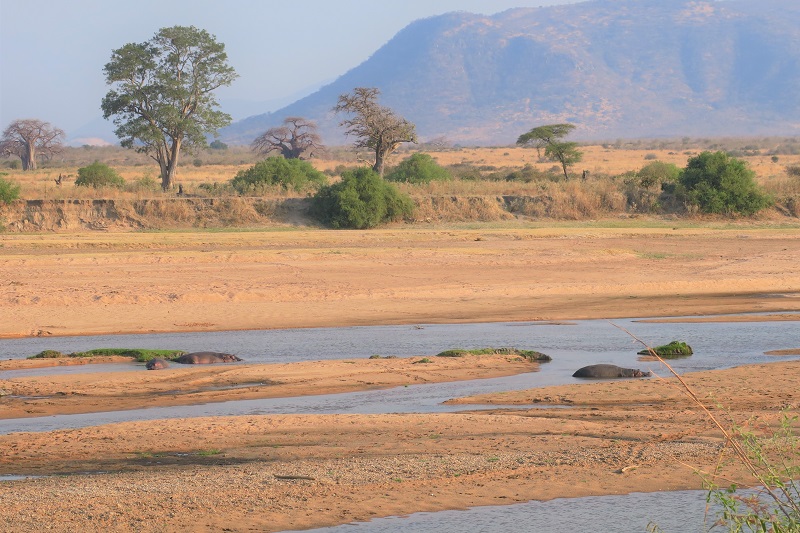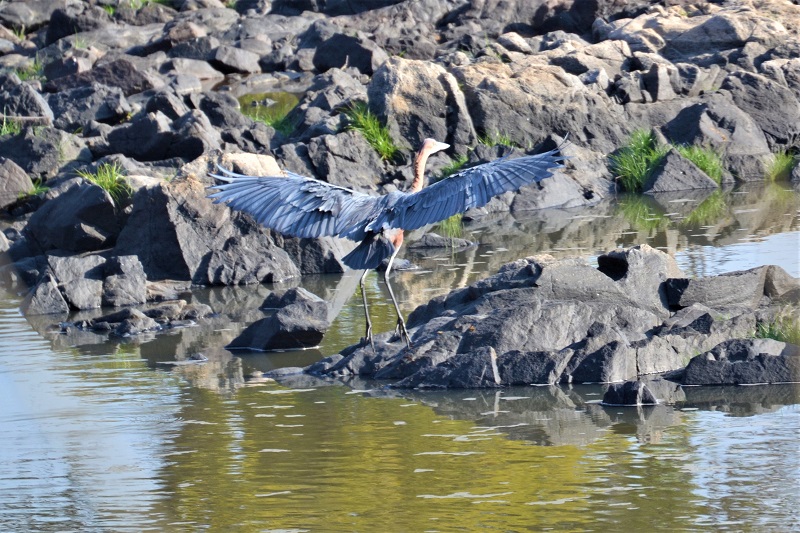Ruaha National Park is one of the largest in Tanzania, but only a part of it is used for safaris. The park winds on an undulating plateau, interrupted by suggestive rocky outcrops, and crosses the landscapes of acacias and baobab with the woods of miombo, which characterize the territories of the South. The Ruaha River is a border between East and South Africa. The name Ruaha comes from a “twist” of the Luhava word, meaning “river” in the language of the Wahehe tribe. The river, around which the safari trails are concentrated, is the vital artery of the park, with its waters, impetuous during the rainy season, and with its sandy bed in the dry season, Under which lies the water that emerges in the pools dug by elephants. The park unfolds in all its beauty and variety, from the arid terrain of the Rift Valley, to the forests that border the river, from the savannah to the mountain forests. In Ruaha National Park, 1.400 different plant species have been identified (compared to 600 in the Serengeti and Nyerere/Selous).
Ruaha National Park
click on the placeholder
POINT OF INTEREST
Wildlife in Ruaha National Park
one of the best for sightings of
• African Bush Elephant • Leopard • East African Wild Dog • Greater kudu • Sable antelope • Puku
very frequent sightings of
• Lion • Cheetah • Hippopotamus • African Buffalo • Zebra • Giraffe • Warthog • Lesser kudu • Impala • Yellow baboon • Vervet monkey • Slender mongoose • Banded mongoose • Dwarf mongoose • Nile monitor lizard • Rock monitor lizard • Crocodile
probable sightings of
• Spotted Hyena • Lichtenstein’s hartebeest • Roan antelope • Waterbuck • Bohor reedbuck • Grant’s Gazelle • Bushbuck (Imbabala) • Common Duiker (Grey) • Steenbok • Klipspringer • Kirk’s Dik-dik • Black-backed Jackal • Bat-eared Fox • Aardwolf • Honey Badger • Yellow-spotted rock hyrax
very rare sightings of
• Striped Hyena
birdwatching
Predatory birds • Pallid Harrier⚑⚑ • Long-crested Eagle⚑ • Steppe Eagle⚑⚑ • Verreaux’s Eagle⚑ • Martial Eagle⚑⚑ • African Fish-eagle⚑ • Tawny Eagle⚑ • Crowned Eagle⚑⚑ • Lappet-faced Vulture⚑⚑ • White-headed Vulture⚑⚑ • Hooded Vulture⚑⚑ • African Pygmy-falcon⚑ • Bateleur⚑⚑ • Sooty Falcon⚑⚑ • White-backed Vulture⚑⚑ • Ruppell’s Vulture⚑⚑ • Red-footed Falcon⚑⚑ • Eleonora’s Falcon⚑ • Mountain Buzzard⚑⚑ • Secretarybird⚑⚑… and several other
Other species • Common Ostrich⚑ • Egyptian Goose • Spur-winged Goose⚑ • Emerald-spotted Wood-dove⚑ • Blue-spotted Wood-dove⚑ • Namaqua Dove⚑ • Grey Crowned Crane⚑⚑ • Buff-crested Bustard⚑ • White-bellied Go-away-bird⚑ • Marabou⚑ •Yellow-billed Stork⚑⚑ • African Openbill⚑⚑ • Black Stork⚑ • Abdim’s Stork⚑ • White Stork⚑ • Saddlebill⚑ • Dwarf Bittern⚑ • Black-crowned Night-heron⚑ • Squacco Heron⚑ • Madagascar Pond-heron⚑⚑ • Grey Heron⚑ • Black-headed Heron⚑ • Goliath Heron⚑ • Black Heron⚑ • Hamerkop⚑ • White-headed Lapwing⚑ • Black-winged Pratincole⚑ • African Skimmer⚑⚑⚑ • Southern Ground-hornbill⚑⚑ • Red-billed Hornbill⚑ • Green Woodhoopoe⚑ • White-headed Buffalo-weaver⚑ • Northern Carmine Bee-eater⚑⚑ (in photo) • Little Bee-eater⚑ • European Roller⚑⚑ • Giant Kingfisher⚑ • Crested Barbet⚑ • Red-and-yellow Barbet⚑ • Yellow-collared Lovebird⚑ • Grey-headed Bush-shrike⚑ • Magpie Shrike⚑ • White-necked Raven⚑ • Pied Crow⚑ • Ashy Starling⚑ • Collared Palm-thrush⚑ • Ruaha Chat⚑… and several other
⚑ Threatened
⚑ Tanzania endemic
⚑ Near endemic
⚑ Africa endemic
⚑ Migratory
PARK ACTIVITIES INCLUDED IN OUR SAFARIS
Safari by car: our programs include a visit to all areas of the park within reach indicated on the map and description, compatible with the weather and environmental conditions and with the regulation of the park.
EXTRA ACTIVITIES IN THE PARK
Safari on foot: experience in close contact with nature, accompanied by an armed ranger, which allows you to approach a few meters from the animals, following their tracks
Night Game Drive: safari by night car, which allows sightings of nocturnal animals, as well as predators hunting
Entry to the National Parks in Tanzania is allowed to licensed off-road vehicles of local tour operators with a valid license. The paths of the safaris are strictly bound to the trails. The strict regulation of parks has the laudable aim of safeguarding the inestimable natural heritage and supporting the local economy. The “DIY tourism” presents many unknowns and therefore becomes difficult to practice. With us, local tour operator with Italian participation, you can realize your dream of a tailor-made safari! Contact us
ACTIVITIES OUTSIDE THE PARK
Iringa – city: visit to the city of Iringa with its ancient buildings of German and Asian origin and with its historical market where you can find carpets and baskets typical of the region.
Isimila Stone Age Site: archaeological site near the town of Iringa where tools dating from 60.000 to 300.000 years ago were found, used by Homo habilis and Homo erectus. Nearby is the museum, which displays some of the objects found. Isimila is also a site of particular scenic beauty; it is in fact a large canyon created by the erosion of the waters of a drained lake. The spectacular nature of the place is due to a particular geological phenomenon: a lava flow has compacted the limestone, while the water, which has eroded the gorge, has spared it, forming pillars up to thirty meters high, which gave birth to a kind of tuff cathedral.
For information on transit fees and park accommodation, already included in the price of our safaris, visit the Park Fees page. The system of taxation of tourism in the parks of Tanzania is the necessary contribution to the conservation of an uncontaminated and wild natural heritage, of inestimable environmental value.
For general information about all parks in Tanzania and about this park – when to go, where is it, nearby destinations – go to Parks of Tanzania page
Are you interested in Ruaha National Park? Contact us!

